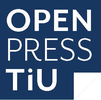Rethinking Safety-by-Design and Techno-Solutionism for the Regulation of Child Sexual Abuse Material
DOI:
https://doi.org/10.71265/nga7v921Keywords:
child sexual abuse material, CSAM, cyber-regulatory theory, safety-by-design, regulatory theory, online safety act, CSAM ProposalAbstract
This article explores the implications of increased reliance on technological solutions to digital regulatory challenges, particularly in Child Sexual Abuse Material (CSAM). It focuses on the contemporary trend of imposing obligations on private actors, such as platforms and service providers, to mitigate risks associated with their services while ensuring the protection of fundamental rights. This leads to new regulatory designs like "safety-by-design," favoured by European regulators due to their cost-effectiveness and efficiency in assigning responsibilities to online gatekeepers. We examine the European Union’s CSAM Proposal and the United Kingdom’s Online Safety Act, ambitious initiatives to employ technology to combat the dissemination of CSAM. This proposal mandates platforms to perform risk assessments and implement mitigation measures against the hosting or dissemination of CSAM. In cases where these measures fail, a detection order can be issued, requiring platforms to deploy technical measures, including AI, to scan all communications. This approach, while well-intentioned, is scrutinised for its potential over-reliance on technology and possible infringement of fundamental rights. The article examines the theoretical underpinnings of “safety-by-design” and “techno-solutionism,” tracing their historical development and evaluating their application in current digital regulation, particularly in online child safety policy. The rise of safety-by-design and techno-solutionism is contextualised within the broader framework of cyber regulation, examining the benefits and potential pitfalls of these approaches.
We argue for a balanced approach that considers technological solutions alongside other regulatory modalities, emphasising the need for comprehensive strategies that address the complex and multifaceted nature of CSAM and online child safety. It highlights the importance of engaging with diverse theoretical perspectives to develop effective, holistic responses to the challenges posed by CSAM in the digital environment.
Downloads
Downloads
Published
Versions
- 02-06-2025 (2)
- 02-06-2025 (1)
Issue
Section
License
Copyright (c) 2025 Andrew Murray, Mark Leiser

This work is licensed under a Creative Commons Attribution-NonCommercial-NoDerivatives 4.0 International License.






